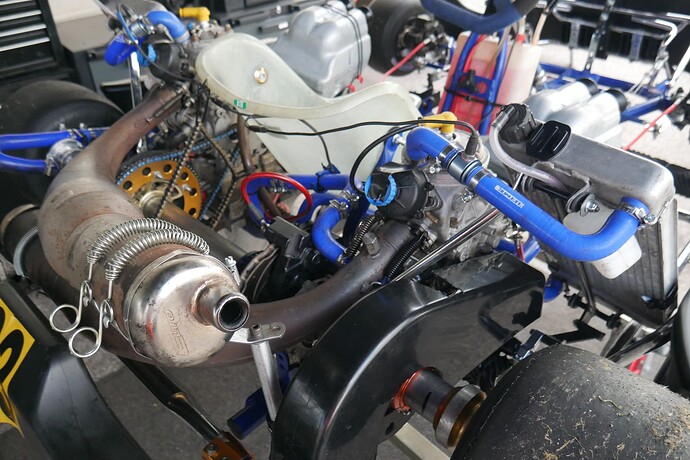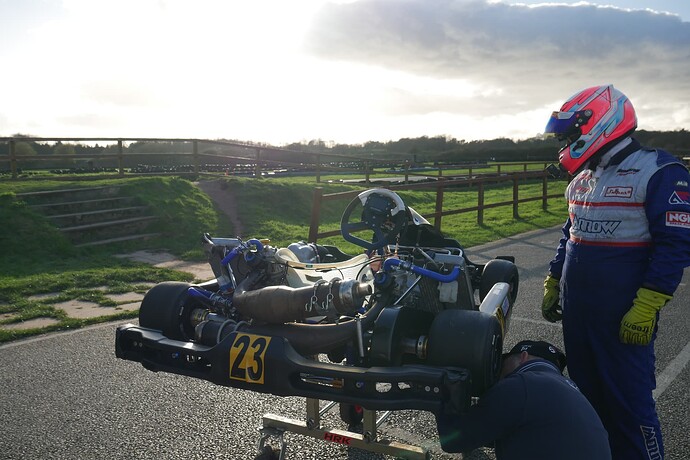Aha. I saw this fellas build vids as well. Really neat kart. He also has a fine pup that wanders around in the vids.
A post was merged into an existing topic: (Weekly) KartPulse Racer Videos Thread
Hehehe 2 engines = 2 men required to push start!
Alan, what’s the power valve do exactly?
It allows you to generate power at low-RPM by limiting the size of the exhaust port. But as you increase RPM it opens up and you can generate more power at higher RPMs. Don’t ask how, it’s magic.
The main benefit is that you can decrease peak RPM and still generate power. This helps to make an engine last longer, more reliable because it doesn’t have to rev hard. This is why a MAX does around 14,200 and delivers similar performance to a powervalveless X30 that is around 16,000.
In racing scenarios especially with multiple manufacturer, it adds complexity, and in the case of KF and then OK, cost.
From a freak point of view it’s cool to have a kart with 80hp like this, but in the realm of FIA karting it’s not so good.
Thank you, sounds quite lovely… Low end grunt and top end howl!
Because money? It’s added complexity? Or something else?
I wouldn’t sday lovely. ![]() The latest generation of engines don’t really sound great imo. The ones with hard limiters especially so.
The latest generation of engines don’t really sound great imo. The ones with hard limiters especially so.
More complexity basically means greater scope for development, and that means cost. 100cc racing was kinda perfect in this regard.
the twin TM K11b Glenn now is going to do will be lovely. ![]()
Moved this to a new topic because it’s absolutely epic.
How does it’s weight compare to a KZ?
Didn’t get a chance to weigh it but I guess around 15kg more than a normal OK.
Starting was pretty tricky. You have to get decent speed because when it fire it kinda stops. So you have to push even harder
I’ve always been curious with builds like this - how does the variety of powerband and inherent unbalance between the two engines work out when connected to the same drive line?
As an example, say one engine is producing 15 ft lb of torque on the axle and another 25 at a given moment, wouldn’t this play havoc on the lifetime endurance of the engines and drive train?
@GGXXIII can answer more definitively on that than I.
I would say in terms of endurance and longevity, that’s not a high priority. If anything, however, the engines are under less stress than normal.
The way I’ve always looked at it is, the engines take whatever load they have. It doesn’t have to be equal and they don’t have to be in sync mechanically… Although one cool thing about having direct drive is you can control the firing order between the two for fun.
(yes it short geared, a lot, and also there’s another issue that has now been solved for next time out)
I have no idea why anyone would ever do that, but I am glad they did. Looks awesome!
This alone is enough to deter me from ever doing a dual build ![]()
Oh that has so much more potential too!!! You can hear an RPM imbalance… its kinda cool




